|
||||||||||||||||||||||
|
1983 UK CitroŽn CX Brochure with text by the redoubtable Leonard Setright |
 |
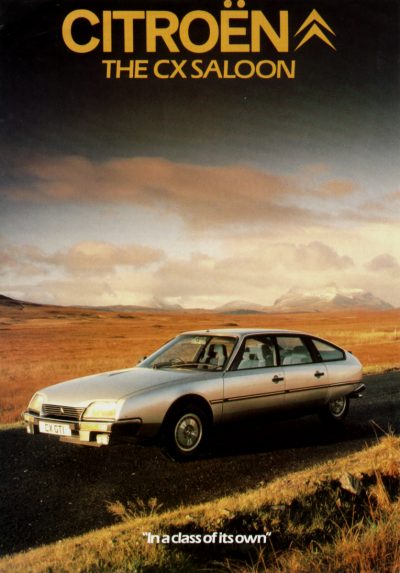 |
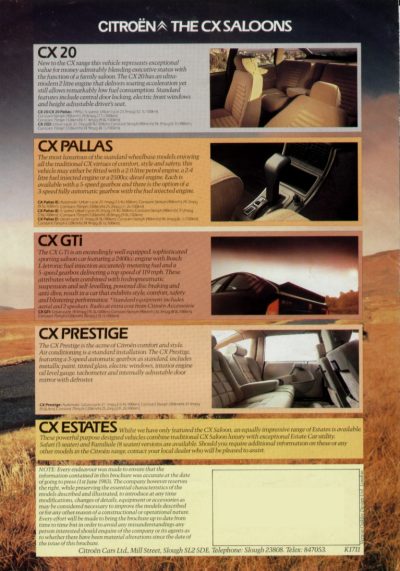 |
LJKS on CXCitroŽn's CX, 10 years on, still holds the most promise for the future argues LJK Setright THE AUDI 100 AND FORD SIERRA ARE SUPPOSED TO BE THE most representative, among all the latest cars, of what we are likely to be offered during the next decade. They are aerodynamically sleek, internally roomy, directionally stable; they answer the helm with fair promptitude, and look after the owners' pocket with great solicitude. They are, in a word, economical: economical of effort, economical of energy, even quite economical of space and of material. If such are the cars of the next 10 years, we could do a lot worse. Could
we perhaps have done better; had we taken proper note of a car
that has
been with us already for a decade, and which can be seen as a
precursor
of those we are promised for the decade to come? How much
better; if at
all, are the new wondercars than the wondrous car that showed
the way?
In the autumn of 1982,1 did a lot of driving of the new Audi
and Ford
windslippers, and very impressed I was by both of them; but I
could not
persuade myself that they were as futuristic as their
promoters assured
me they were. |
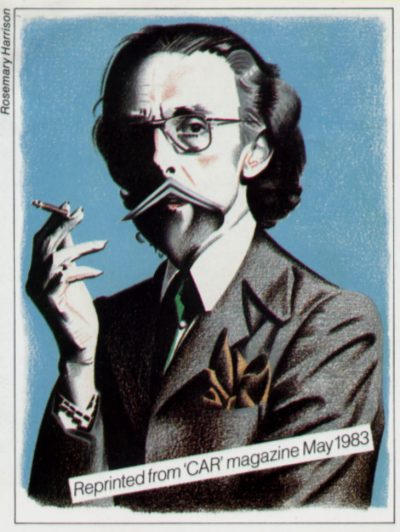 |
|
I had to drive the CitroŽn CX again, to remind myself just how things have changed in the last 10 years. and how our view of the future has changed with them. Whether the future itself will change is another matter entirely; the CitroŽn may yet prove to have been the better model for the cars of 1990. We have grown used to the idea that the shape of the CX does not produce as good a drag coefficient as we were first led to believe. That does not justify us in deriding the CX body; it was better than anybody asked for in its day, and it has ample potential for being cleaned up (especially underneath) so that its Cd could be brought as low as that of the Sierra, and perhaps as low as that of the Audi. What of its other shortcomings? By today's standards, the CX is not a frugal car; its engine was designed at a time when fuel seemed abundant, and it was tragic for CitroŽn that the 1973/4 fuel crisis should have occurred just when the car was being introduced to the public. Suddenly, nobody wanted big cars-and in France, the CX was reckoned big. No great pains had been taken to make it 'light, and even though it was geared fairly high, it was meant to be driven at high engine rpm even in top gear, for those were the blessed days when the motorists of Europe, really went about their business without dithering. Britain might have a speed limit, but the other nations had speed. How old-fashioned that situation seems today! It may not, forever. The truth about fuel is that it really is abundant. If all the countries which have suffered recession since that political and artificial crisis were ever to recognise the relationship of cause and effect and were inspired by the desire for financial strength, to speed up their economies somehow, they might well start by trying to speed up the circulation of their lifeblood on the roads that are their arteries. When and whether that will happen, and where, I cannot forecast; but I cannot believe that they can afford to go slowly much longer If miles per hour should again become as important as miles per gallon (as some astute politician could profitably contrive), the CX would not seem a bit old-fashioned. The cars of 10 years ago were a bit under-endowed in the tyres department, mark you. That is something in which real progress has been made - and it is tragic that tyres are now being pruned back in an effort to wring every last mile-per- gallon out of a car that could use plenty of roadholding rubber- as is the case with the Ford and the Audi. In its original form, the CitroŽn was less than generously shod, too, but for the past year or two it has been offered with wider wheels and Michelin TRX tyres, as options on the CX Pallas I E and Prestige, and as standard equipment on the CX GTi. Never mind the fuel consumption, feel the car! With 128bhp (DIN), TRX tyres, and slightly lower overall gearing, the GTi would be the least attuned of all the CX range to current ideas of future economies, and would therefore be the best CX to pit against these newcomers - as well as the best to drive. As the most developed version of a car that was seen as a harbinger of the future that is our present, it would be the most interesting to compare with those newcomers that are similarly seen now. 'If MPH should again become as important as MPG (as a politician could contrive) the CX would not seem a bit old-fashioned' What did I find? The CitroŽn was thirstier; beyond a doubt. I could manage 30mpg from it, but could as easily be tempted to make it 20. The Ford Sierra in 2.3 Ghia trim averaged 34mpg, despite its automatic transmission: I suspect that the real reason for this frugality was that it is a car which encourages one to drive smoothly and gently, because it is so very good and satisfying when driven like that. As for the Audi, for which the makers claim 34mpg when cruising somewhat faster than the UK legal limit, the fascination lay in its tremendous range; not wanting to be caught out by the possibility of an erratic fuel gauge (I need not have worried-it was accurate), I took fright and refuelled after 519 miles. Extrapolation showed that I could have gone on to do 602, only 19 miles short of the promised 1000km per tankful. That too meant about 34mpg, despite an awful lot of short trips in town and suburbs, with high speeds a regular indulgence on the rare longer ones where the car really came into its easy-running own. That used to be the prerogative of the big CitroŽns, that high-speed long-legged needling of the wind and blanketing of the road; and I do not think their abilities have yet been substantially bettered. I took all three cars in turn over the same route, the journey mixing city, suburbs, country roads, motorways, road works, sleeping policemen and dozy traffic in the course of about 180 miles, and the CitroŽn did it best. My verdict might have been different had this been the CX of 1973, but the GTi, with its five-speed gearbox, tauter suspension, firmer seats, fatter tyres, and an injected engine which musters almost the power of the Audi together with a prodigiously broad torque curve (not to mention almost perfect gearing), has brought the basic 1973 idea a long way forward In everything except fuel economy, this car was the most accomplished of the three. 'The steering of the CX was so sharp and quick, so accurate and unhesitating, so unfailingly faithful to every suggestion imparted to the wheel' The Ford gave one a marvellous ride, I grant it; but there were surfaces on which it was disappointing - not bad, but not as good as the CX. There is still a lot to be said for steel springs, but the CitroŽn oleopneumatics which took the motor car and turned it from a motorised cart into a magic carpet are simply the best suspension medium in use. There is an essential proviso, that they be used as CitroŽn use them; given that satisfaction, there is nothing more satisfactory. Pneumatic springs are not enough, but when the CitroŽn self-levelling system is added, everything makes mutually contributory sense: there is an enormous range of suspension movement available to accommodate variations in load, and yet the effective wheel travel when the car is in motion is limited to about three inches, such is the beauty of the progress-rate springing given by a constant-mass gas bubble. Because the total wheel travel is so great, the suspension has to be made free from variations in camber and toe-in; because the effective travel is so small, the only disadvantage of that parallel motion suspension becomes negligible. It defines a ground-level roll centre, a corollary of which is that the wheels pass through a camber change equal to the degree of roll when the cars cornering; with upright wheels at static setting, that means positive and theoretically undesirable outward lean of the tyres when cornering. By admitting the ideal-shattering corruption of steel anti-roll torsion bars to limit the amount of roll, CitroŽn keep the tilt to tolerable proportions, and the accommodating flexibility of the TRX tyres reduces what remains of the problem to practical neglibility. So it was that I found the CX GTi outcornered and outhandled the others. The bend I remember best was a feeder road linking two motorways: it spiralled downhill through 27Odeg and gradually tightened itsradius at the same time. The Ford shuffled its feet uneasily, and the Audi felt as hard pressed as it was when put to the proof. Not the CX: it went through faster than the others, actually accelerating all the way, while giving me that feeling that my brains were being extruded through my right ear; the feeling that signifies the achievement of really respectable lateral g forces. If
this centripetal ear-piercing were more nearly representative
of
steady-state than of transient cornering conditions, the
steering of
the CX was so sharp and quick, so accurate and unhesitating,
so
unfailingly faithful to every suggestion imparted to the
steering
wheel, be it a tiny twitch or a brutal jerk, as to leave the
other two
cars quite outside any comparative possibilities. There is no
steering
like this; all steering should be like this. So was the whole car. If one of these three is to emerge as harbinger of our motoring future, I hope the CX GTi is the one. For the present, if I had to choose one car to serve equally well anywhere in Europe, Africa, or (and especially) America, and maybe elsewhere on roads with which I am not yet familiar; I do not see how it could be anything but the CX. I hope that 1990 is kind to CitroŽn; a developed derivative of the CX would be so good, surely, for 1990. |
|
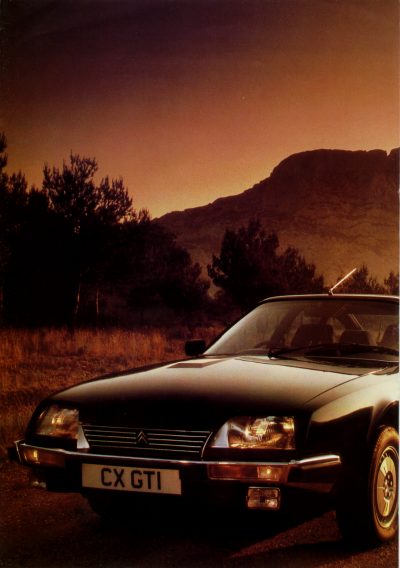 |
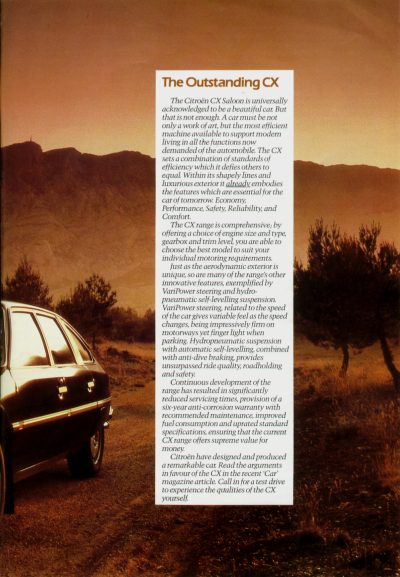 |
|
The Outstanding
CX The
CX range is comprehensive; by offering a choice of engine
size and
type, gearbox and trim level, you are able to choose the
best model to
suit your individual motoring requirements. Continuous development of the range has resulted in significantly reduced servicing times, provision of a six-year anti-corrosion warranty with recommended maintenance, improved fuel consumption and uprated standard specifications, ensuring that the current CX range offers supreme value for money. CitroŽn have
designed and produced a remarkable car. Read the
arguments in
favour of the CX in the recent 'Car' magazine article. Call
in for a
test drive to experience the qualities of the CX yourself. |
|
 |
|

